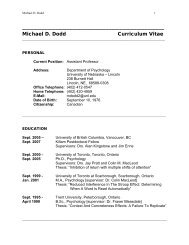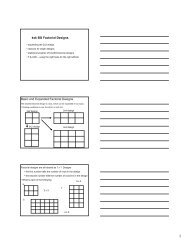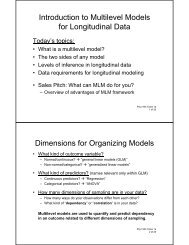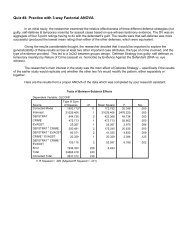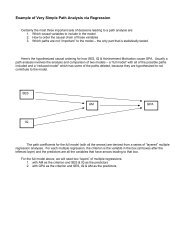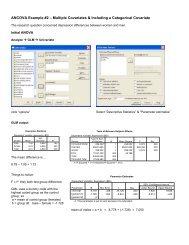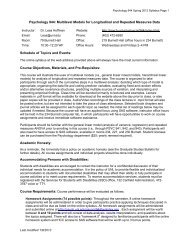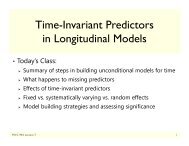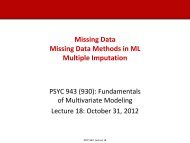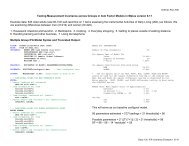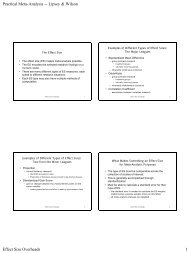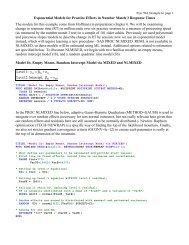Introduction to Path Analysis
Introduction to Path Analysis
Introduction to Path Analysis
You also want an ePaper? Increase the reach of your titles
YUMPU automatically turns print PDFs into web optimized ePapers that Google loves.
… <strong>to</strong> investigate “mediation effects”…<br />
The resulting model looks like …<br />
TQ<br />
β=.0<br />
β=.3<br />
ST<br />
β=.4<br />
EP<br />
We might describe model as, “The apparent effect of Teaching Quality on Exam<br />
Performance (r=.30) is mediated by Study Time.”<br />
We might describe the combination of the bivariate analysis and the multiple<br />
regression from which the path coefficients were obtained as, “While Teaching<br />
Quality has a bivariate relationship with Exam Performance (r=.30), it does not<br />
contribute <strong>to</strong> a multiple regression model (β=.0) that also includes Study Time<br />
(β=.40).<br />
Either analysis reminds us that the bivariate contribution of a given predic<strong>to</strong>r<br />
might not “hold up” when we look at that relationship within a multivariate<br />
model!<br />
Notice that TQ is “still important” because it seems <strong>to</strong> have something <strong>to</strong> do<br />
with study time – an indirect effect upon Exam Performance.



